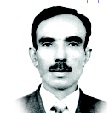Sajjad Shaukat
Twenty-seven years ago, Indian Constitution
which claims India to be a secular state was torn
into pieces when on 6 December 1992, a large crowd of Hindu Karsevaks (Volunteers) entirely demolished the 16th-century Babri Masjid in Ayodhya, Uttar Pradesh in a preplanned attempt to reclaim the land known as RAM Janmabhoomi–birthplace of the god. The demolition of the Babri Masjid sparked Muslim outrage around the country, provoking several months of inter-communal rioting between Hindu and Muslim communities, causing the death of at least 2,000 people, majority of whom were Muslims. The governments of several neighbouring countries, including those of the Islamic world condemned the Indian government for failing to stop the destruction of the historical mosque.
In a 2005 book, India’s former Intelligence Bureau (IB) Joint Director Maloy Krishna Dhar wrote that Babri Masjid demolition was planned 10 months in advance by top leaders of the Rashtriya Swayamsevak Sangh (RSS), BJP BJP/Sangh Parivar, VHP, Shiv Sena, the Bajrang Dal and the then Prime Minister PV Narasimha Raow. Dhar elaborated, “He had drawn up the blueprint of the Hindutva (Hindu nationalism) assault at Ayodhya in December 1992.” A 2009 report of the Inquiry Commission, authored by retired High Court Justice Manmohan Singh Liberhan, found 68 people to be responsible for the destruction of the Babri Masjid, mostly leaders from the BJP. But no action was taken against them.
By showing prejudice in favour of Hindus, on 30 September 2010, the Allahabad High Court ruled that the 2,400 square feet (220 m2) disputed piece of land, on which the Babri Masjid had stood would be divided into three parts. The site at which the idol of Rama had been placed was granted to Hindus in general, the Sunni Wakf Board got one third of the plot and the Hindu sect Nirmohi Akhara got the remaining third. The excavations by the Archaeological Survey of India were heavily used as evidence by the court to support its so-called finding that the original structure at the site was a massive Hindu religious building.
Anti-Muslim biased approach could be judged from the verdict of the Supreme Court of India. While announcing its judgement on the disputed land regarding the Babri Masjid, the court ruled in favour of the Hindus and said that a temple will be constructed on the Ayodhya site. The court noted that the demolition of 460-year-old Babri Masjid in 1992 was a violation of law and ordered that five-acre alternative land in a suitable, prominent place be provided to Muslims for a mosque. The land for the mosque will be acquired by the government.
It is notable that in the Indian general election of 2019, BJP and National Democratic Alliance (NDA) won huge majority in the Lok Sabha, with the BJP sweeping up 303 seats on its own—21 seats more than it won in the 2014 elections. Hindu majority was mobilized on ‘hate Muslim’ slogans and ‘anti-Pakistan’ jargons, while the incessant and unjust Indian propaganda against the Muslims and Pakistan was beyond anybody’s cognition, which still keeps on going. Indian Prime Minister Modi’s extremist party BJP had also got a landsliding triumph in the Indian elections 2014 on the basis of anti-Muslim and anti-Pakistan slogans. Hence, since the Prime Minister Modi came to power, he has been implementing anti-Muslim and anti-Pakistan agenda with the support of fanatic coalition outfits.
In the aftermath of the elections, news reports have highlighted different cases in which Dalits and particularly Muslims were violently targeted for reasons as varied as allegedly possessing beef, protesting against caste-based discrimination or simply being Muslim. Especially, various incidents of arrests and violent assaults on the Muslims by the Hindus have been recorded. It is mentionable that almost 120 days have passed. Indian forces have continued lockdown and curfew in the Indian-occupied Kashmir (IoK). On 5 August 2019, New Delhi unilaterally annexed the IoK, revoking Articles 35-A and 370 of the Constitution which gave a special status to Kashmir. While, Indian fanatic rulers are also escalating tension with Pakistan to divert attention from the drastic situation of the India-occupied Kashmir and have continued shelling inside Pakistani side of Kashmir by violating the ceasefire agreement in relation to the Line of Control (LoC).
Besides, implementing the 5 August announcement, Indian central government issued a notorious map on 31 October this year. In accordance with it, Jammu and Kashmir was bifurcated into two union territories — Jammu and Kashmir and Ladakh. Although apparently, India claims to be the largest democracy, acting upon the principles of liberalism and secularism, yet in practice, all political, economic and social fields of the country are divided on the caste lines. It is surprising that theoretically, Indian Constitution safeguards the rights of minorities, but in practice, ideology of Hindutva prevails. Hindu majority led by the BJP has shown complete disregard to the Constitution, and continued committing excesses and cruelties against Muslims, Sikhs, Christians and Dalits with impunity. Nonetheless, apart from other frenzy events, the demolition of the Babri Masjid will remain a major scar on Indian so-called secularism, as on the very day (6th December); Indian fundamentalist leaders broke all the records of Hindutva terror by deliberately hurting the feelings of the Muslims. The atrocities and tyranny let loose on that day in Ayodhya continues unabated against the Muslims in one form or the other, under the Modi regime.
—The writer is freelance columnist based in Lahore.










